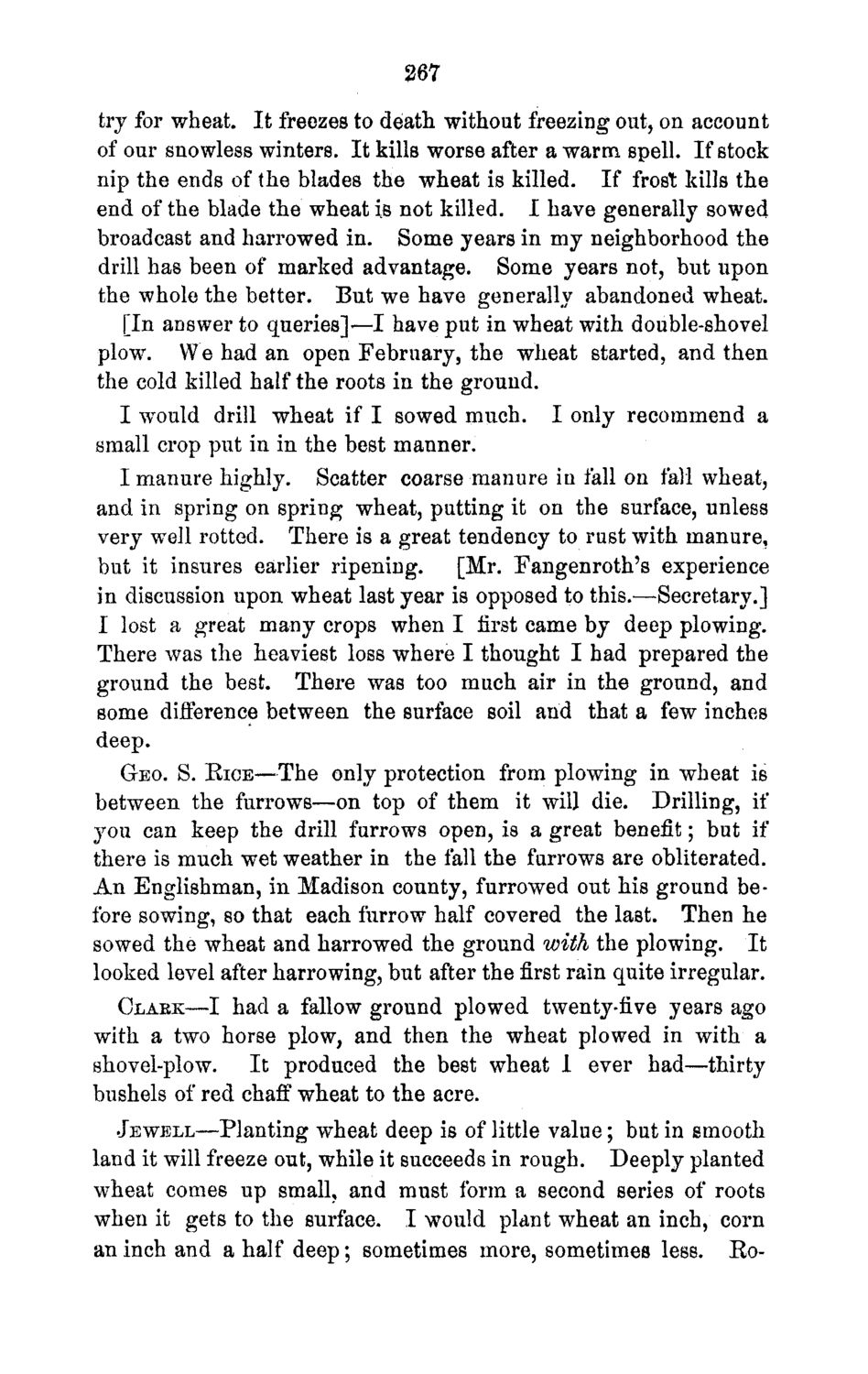| |
| |
Caption: Board of Trustees Minutes - 1870
This is a reduced-resolution page image for fast online browsing.

EXTRACTED TEXT FROM PAGE:
267 try for wheat. It freezes to death without freezing out, on account of our snowless winters. It kills worse after a warm spell. If stock nip the ends of the blades the wheat is killed. If frost kills the end of the blade the wheat is not killed. I have generally sowed broadcast and harrowed in. Some years in my neighborhood the drill has been of marked advantage. Some years not, but upon the whole the better. But we have generally abandoned wheat. [In answer to queries]—I have put in wheat with double-shovel plow. We had an open February, the wheat started, and then the cold killed half the roots in the ground. I would drill wheat if I sowed much. I only recommend a small crop put in in the best manner. I manure highly. Scatter coarse manure in fall on fall wheat, and in spring on spring wheat, putting it on the surface, unless very well rotted. There is a great tendency to rust with manure, but it insures earlier ripening. [Mr. Fangenroth's experience in discussion upon wheat last year is opposed to this.—Secretary.] I lost a great many crops when I first came by deep plowing. There was the heaviest loss where I thought I had prepared the ground the best. There was too much air in the ground, and some difference between the surface soil and that a few inches deep. GEO. S. EICE—The only protection from plowing in wheat is between the furrows—on top of them it will die. Drilling, if you can keep the drill furrows open, is a great benefit; but if there is much wet weather in the fall the furrows are obliterated. An Englishman, in Madison county, furrowed out his ground before sowing, so that each furrow half covered the last. Then he sowed the wheat and harrowed the ground with the plowing. It looked level after harrowing, but after the first rain quite irregular. CLARK—I had a fallow ground plowed twenty-five years ago with a two horse plow, and then the wheat plowed in with a shovel-plow. It produced the best wheat I ever had—thirty bushels of red chaff wheat to the acre. JEWELL—Planting wheat deep is of little value; but in smooth land it will freeze out, while it succeeds in rough. Deeply planted wheat comes up small, and must form a second series of roots when it gets to the surface. I would plant wheat an inch, corn an inch and a half deep; sometimes more, sometimes less. Ko-
| |